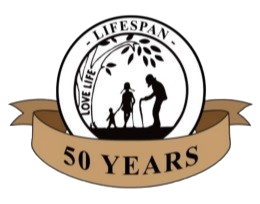Anencephalic Question: Right to Life – LIFESPAN Policy Statement
Adopted October 19, 1988
Some 3,000 babies a year are born with the absence of the higher centers of the brain (the cerebral cortex). This condition is called anencephaly. They do have a functioning brainstem. They can breathe, feel pain, cry and swallow at birth, but seldom do they live more than a week. As their life force runs down, their organs become increasingly unusable for transplants.
This fact is prompting specialists to develop protocols aimed at rendering the babies proper transplant donors by placing the newborns on respirators at the time of, or quickly after, delivery. They are given oxygen, thereby keeping the organs “fresh” until death is determined and the organs taken. [1]
Pioneering in this protocol is the Loma Linda Medical Center, and the activity has given rise to the criticism that they are “harvesting organs.”
Concurrent with the above situation is the rising demand for transplant organs and the wide use of amniocentesis which identifies in the womb the child afflicted with anencephaly. Therefore, parents using amniocentesis have time to reflect on the condition and to decide l) to carry the baby to term and care lovingly for his/her short life, 2) to abort, 3) to offer the child’s organs for transplant. This last option has proven attractive to some parents who see it as a means of bringing good from their own suffering.
Yet there is a sizable obstacle facing parents and doctors. The Uniform Determination of Death Act, in force in most states, defines brain death in terms of permanent loss of function of the whole brain, including the brainstem. Scientists tell us, however, that there is no clear way to determine brain death in children [2]. The urgent question then becomes—will the baby’s heart, liver, kidneys be taken while it is still alive? There seems to be no cogent answer, only nebulous ones, and it is at this point that ethical thinkers part company.
There are some, like Dr. Alexander Capron, a University of Southern California Professor of Law and Medicine, who object to using anencephalics as donors because brain death cannot be determined satisfactorily, and organs may therefore be taken from living donors. He points out that presently, the parties determining death are committed to the well-being of the donor, and to follow the Loma Linda way will confuse the rights of future donors, placing their lives in jeopardy. [3] He also points out that potential future donors (such as accident victims) will not be so quick to sign donor cards in the future, because, if hospitals will take organs from a still living baby, who will protect other donors from being so used?
Right to Life – LIFESPAN agrees with Dr. Capron and also argues that these babies will not in any way be valued for themselves, but rather as a source of parts for others, and that the intrinsic worth of the human person, having already been denied by legal abortion, will be further negated.
Opposing Dr. Capron’s ethics are those more inclined to the utilitarian view of the human person. Now there is a concerted effort afoot in several states to change the definition of brain death for these babies.
Until now, organ donors have been accident victims who signed donor cards prior to the accident, or whose families, upon a comatose condition and imminent death of the subject, permitted the organ transfer. But these transplants are made after death has been determined in accordance with state laws. It is upon the question of when death occurs that the debate over principle arises. Once organ transfer became widespread, the need for organs became critical. The temptation to get the donor declared dead as quickly as possible is severe because there is a patient across the hall dying for need of a heart, a liver, or kidney transplant. The moral exasperation is real.
In fact, in studying the Loma Linda protocols, the reader gets the sense that Loma Linda is not entirely comfortable with its own position, since it states, by way of summing up: “Given our society, variety of attitudes about death, dignity, intensive care, organ donation and personhood, it is not surprising that there is at this time no clear consensus regarding the morality of modifying medical management for anencephalic infants to provide a chance for organ donation.” (Emphasis ours) They go on to shift the enormous moral burden to the parents whose shattered hopes and grieving hearts hardly qualify them for the task. [4]
Right to Life – LIFESPAN believes that the time is here when respect for living persons—both before and after birth—must be held as an unyielding principle. If, as Loma Linda says, there is no consensus on the morality of its nebulous philosophy, let us strive to become part of that consensus. Let us articulate our position to the Congress and Legislatures where restraining laws may be made, and the affirmation of life is loud and clear.
[1] “Considerations of Anencephalic Infants As Organ Donors – A Working Document,” December 18, 1987, A Protocol written by the Anencephalic Organ Donation Committee of Loma Linda Medical Center.
[2] “Brain Death in Children,” Part 1. Stephen Aswal, M.D. and Sanford Schneider, M.D. Loma Linda University School of Medicine, November 24, 1986.
[3] Dr. Alexander Capron, “Nightline,” ABC News, Show #1713, December 16, 1987.
[4] See Note #1.
